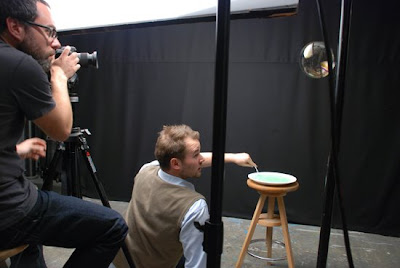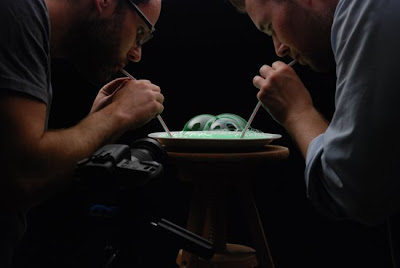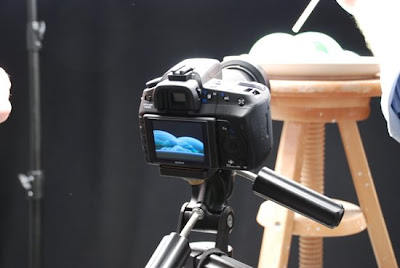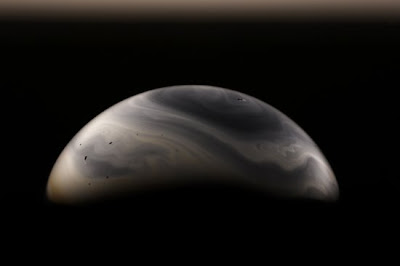I don’t see anyone else out there catching the most simple images of the world and having them look so beautiful.

Incredible Soap Bubble Photos by Jason Tozer
An old coat hanger bent into a wire loop and a good recipe for bubble mixture - some of the hi-tech essentials for producing great images


“I looked online for bubble recipes and a bit of glucose is apparently the key,” says Tozer. “Ten parts water, one part washing-up liquid and a little bit of glucose. We also used distilled water as well because hard water isn’t so good.”
Tozer’s first experiments produced several close-ups of elongated bubble shapes. Poised in front of a black background, his assistant was charged with bringing the detergent-loaded hoop through the air in front of the camera. Only occasionally would the bubble pass by the correct position…



To achieve the more planet-like images, Tozer began by blowing through a straw into a plate of the solution and turning the camera on what formed on the near-side of the dish.



Interestingly, Tozer found that as further bubbles were made from a particular batch of solution, less colors appeared on the surface. “The first bubble you make has loads of colour in it, when you make another couple they seem to have less detergent in them, so less colour,” he says. “The detergent sinks to the bottom of the bubbles, leaving the water behind, so you gradually get paler images.”
For example:




As for the settings on the camera itself – Tozer kept it all to manual. “I was trying to get the highest shutter speed we could, with the lowest ASA, so the shots were less grainy,” he says. “When we got some beefier lights we were able to go down to about 100 and then 200 ASA.”
What seems most remarkable about Tozer’s shoot is how a seemingly transparent film of liquid actually revealed a whole multitude of colors when caught in mid-air and photographed. Because of this Tozer was able to play around with scale and perspective and create a fantastic series of otherworldly pictures.


Incredible Soap Bubble Photos by Jason Tozer
An old coat hanger bent into a wire loop and a good recipe for bubble mixture - some of the hi-tech essentials for producing great images


“I looked online for bubble recipes and a bit of glucose is apparently the key,” says Tozer. “Ten parts water, one part washing-up liquid and a little bit of glucose. We also used distilled water as well because hard water isn’t so good.”
Tozer’s first experiments produced several close-ups of elongated bubble shapes. Poised in front of a black background, his assistant was charged with bringing the detergent-loaded hoop through the air in front of the camera. Only occasionally would the bubble pass by the correct position…



To achieve the more planet-like images, Tozer began by blowing through a straw into a plate of the solution and turning the camera on what formed on the near-side of the dish.



Interestingly, Tozer found that as further bubbles were made from a particular batch of solution, less colors appeared on the surface. “The first bubble you make has loads of colour in it, when you make another couple they seem to have less detergent in them, so less colour,” he says. “The detergent sinks to the bottom of the bubbles, leaving the water behind, so you gradually get paler images.”
For example:




As for the settings on the camera itself – Tozer kept it all to manual. “I was trying to get the highest shutter speed we could, with the lowest ASA, so the shots were less grainy,” he says. “When we got some beefier lights we were able to go down to about 100 and then 200 ASA.”
What seems most remarkable about Tozer’s shoot is how a seemingly transparent film of liquid actually revealed a whole multitude of colors when caught in mid-air and photographed. Because of this Tozer was able to play around with scale and perspective and create a fantastic series of otherworldly pictures.








0 comments:
Post a Comment